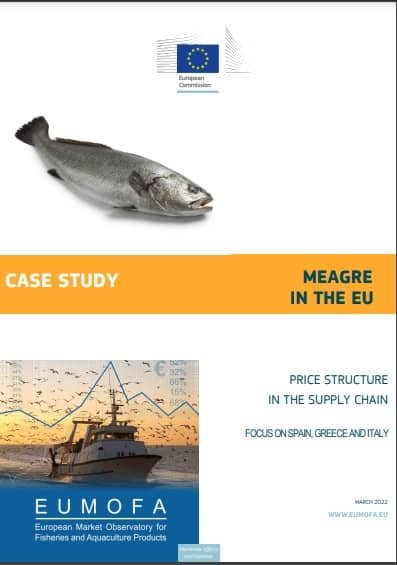In 2015, catches of turbot worldwide reached nearly 6.000 tonnes, of which the EU accounted for 85%. In the same year, landings of turbot in the EU totalled about 5.000 tonnes. With more than 2.000 tonnes of landings, the Netherlands was the main MS, accounting for 41% of total EU landings.
When it comes to aquaculture, the production of farmed turbot reached 10.173 tonnes in 2015. Most of this production was in Spain (73%) and Portugal (23%). Among the other producing MSs were France and the Netherlands. The EU production of turbot reached a peak in 2012 at more than 11.000 tonnes, due to increased production in Spain and Portugal. Over the past decade, the French production has experienced a marked downward trend (-65%), whereas the Dutch production has remained relatively stable.
Overall, approximately 15.000 tonnes of turbot are consumed in the EU, mainly fresh. Consumption is concentrated in Spain, France and Italy, which represent about 3/4 of the EU apparent market. This makes turbot a niche market compared with other major species. Turbot trade is characterised almost entirely by intra-EU flows, mostly related to the export of farmed turbot from Spain and Portugal and wild-caught turbot from the Netherlands.
While turbot is mainly sold through large-scale retailers and fishmongers in Spain, it is mainly consumed out of home in France and the Netherlands. In Spain, consumption mainly relies on farmed turbot (due to the large national production), while consumption in France and the Netherlands relies to a larger extent on wild catch fishery.
A set of five price transmission analyses have been performed on a representative product and market in the MS considered: analyses cover the sales to HORECA in France and the Netherlands and large-scale retailers in Spain. Because of several significant differences in the fresh whole turbot supply chain in the three MS covered here, comparisons of price transmission should be treated with caution. The main conclusions from this analysis are:
– As far as the HORECA market is concerned, the costs from first sale to the distribution platform are higher for fishery products. This is due to the presence of an additional intermediary in the supply chain for fishery products (several wholesalers or a wholesale market) compared to the supply chain for farmed products.
– As regards the analysis of the Spanish supply chain, the costs for the “platform stage” are particularly low. This stage only covers one stakeholder, compared to two intermediaries for wild fish products to HORECA.
Stay Always Informed
Join our communities to instantly receive the most important news, reports, and analysis from the aquaculture industry.
– Observed differences in price at first sale are more significant in relation to fish size or a specific quality scheme rather than to production method (wild-caught/farmed). Furthermore, prices of farmed products are more stable over the year than prices of wild caught products (which experience significant seasonality).
Read this and more in the latest EUMOFA case study: http://www.eumofa.eu/price-structure
Editor at the digital magazine AquaHoy. He holds a degree in Aquaculture Biology from the National University of Santa (UNS) and a Master’s degree in Science and Innovation Management from the Polytechnic University of Valencia, with postgraduate diplomas in Business Innovation and Innovation Management. He possesses extensive experience in the aquaculture and fisheries sector, having led the Fisheries Innovation Unit of the National Program for Innovation in Fisheries and Aquaculture (PNIPA). He has served as a senior consultant in technology watch, an innovation project formulator and advisor, and a lecturer at UNS. He is a member of the Peruvian College of Biologists and was recognized by the World Aquaculture Society (WAS) in 2016 for his contribution to aquaculture.




